There’s something about Altea Old Town that makes time slow down. Maybe it’s the way the sunlight dances on the whitewashed walls, or how the Mediterranean breeze carries the scent of orange blossoms through the labyrinth of cobbled streets. At first glance, it seems like a scene from an artist’s sketchbook—impossibly picturesque, yet undeniably real. Walk a little further, and you’ll hear the echoes of past centuries in the Moorish archways, the church bells ringing from the Iglesia de Nuestra Señora del Consuelo, and the soft chatter of artists painting in sunlit studios.
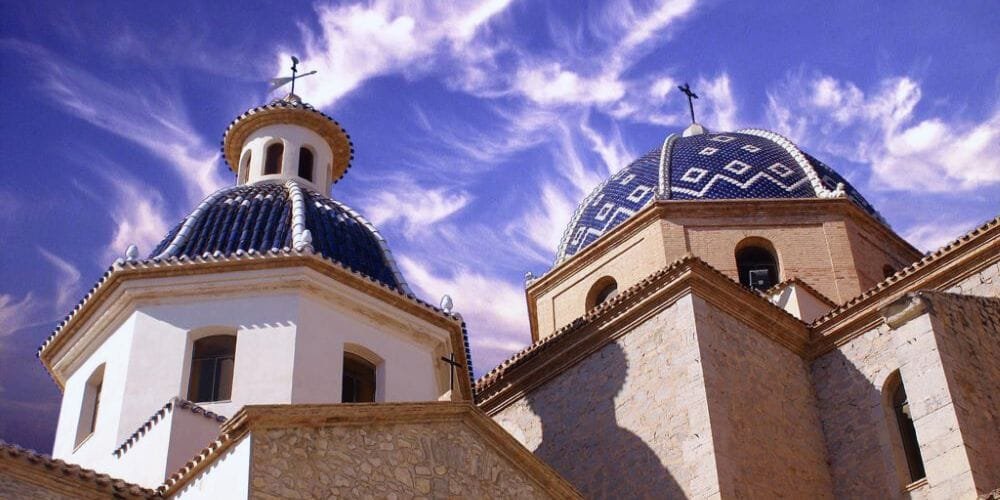
Altea isn’t just another charming Spanish town—it’s a story woven from history, art, and tradition. Founded by the Iberians, shaped by the Romans, and later transformed by the Moors, its streets were designed not just for beauty, but for protection. Even today, they seem to conspire in leading travelers off the beaten path, rewarding the curious with hidden courtyards, wrought-iron balconies draped in bougainvillea, and glimpses of the sea between rooftops. It’s no wonder that for decades, Altea has drawn painters, writers, and dreamers in search of inspiration.
But what is it that makes Altea Old Town so irresistible? Is it the blue-domed church standing like a lighthouse over the Mediterranean? The artisan workshops where tradition meets creativity? Or the way sunset turns the town into a canvas of gold and indigo? Whatever it is, Altea doesn’t ask for your attention—it effortlessly holds it. And once you’ve wandered its streets, you’ll understand why so many fall in love with this timeless enclave.
Post last updated on March 30, 2025 (originally published on April 3, 2025) by Roberta Darie.

“Happiness, not in another place, but this place… not for another hour, but this hour.”
— Walt Whitman

Where is Altea Old Town & How to Get There
Tucked Perched on a hillside above the Mediterranean, Altea Old Town seems frozen in time. Its whitewashed houses, sun-drenched plazas, and terracotta rooftops form a striking contrast against the deep blue of the sea. Located on Spain’s Costa Blanca, it sits between Benidorm and Calpe, yet feels a world away from their modern skylines. Here, time slows down. Every step reveals a new glimpse of history, a hidden courtyard, or an artist’s studio bathed in golden light.
Getting to Altea Old Town is part of the experience. The nearest airport, Alicante-Elche Airport, is 70 km (ca. 43 miles) away, making it an easy one-hour drive along the AP-7 highway, a scenic coastal route. If you prefer slow travel, the TRAM Metropolitano de Alicante offers a leisurely ride past rugged cliffs, golden beaches, and sleepy fishing villages. The journey takes 1.5 hours, but the views make every minute worthwhile.
For those arriving by car, the N-332 coastal road offers one of the most scenic drives in the region. From Valencia, the trip takes about 1 hour and 45 minutes (140 km / ca. 87 miles), while Alicante is just 45 minutes away (50 km / ca. 31 miles). Once in Altea, parking near the waterfront is best—the historic old town is best explored on foot, where every winding alley reveals another layer of its story.
Is Altea Old Town worth Visiting?
Some places captivate instantly. Others take their time, revealing their magic in layers. Altea Old Town belongs to the latter. It’s not just about the whitewashed walls, the blue-domed church, or the views of the Mediterranean—though those are unforgettable. It’s about the unexpected details. The weathered wooden doors, polished by centuries of hands. The hidden courtyards, where bougainvillea spills over stone walls. The way the afternoon light transforms the town into a living painting.
The name Altea is believed to come from the Greek word “Althaea,” meaning “to heal.” Fittingly, the town has long been a refuge—for Iberians, Moors, and later, artists searching for inspiration. In the 1960s, when much of Spain’s coastline succumbed to mass tourism, Altea took a different path. Painters, writers, and sculptors settled here, drawn by the tranquility and Mediterranean light. They turned abandoned houses into studios, filled the streets with creativity, and left a legacy that remains today. The Faculty of Fine Arts, one of Spain’s most respected, continues to attract students, ensuring that art pulses through the town’s heart.
But Altea Old Town is more than a picturesque retreat. Its winding Moorish streets—once designed to confuse invaders—now invite visitors to wander without direction. There’s no rush here, no itinerary required. Just follow the curves of the alleys, let curiosity lead, and discover a town that reveals itself in quiet, timeless moments.

A Glimpse into Altea’s History: From Iberian Settlements to an Artistic Haven
The story of Altea Old Town is one of movement and transformation. Long before its whitewashed houses became a magnet for artists, this coastal enclave was home to Iberian communities, later influenced by Roman, Moorish, and Christian cultures.
Archaeological finds at Altea la Vella, a nearby Iberian settlement, reveal a 6th–5th century BCE village with a funerary necropolis, where warriors were buried with their weapons and bronze ornaments.
Roman occupation left behind traces of Els Arcs, an aqueduct that supplied water to early coastal settlements. Yet, it was under Moorish rule (8th–13th century CE) that Altea flourished, becoming part of the Taifa of Dénia. The town’s narrow, winding streets—still preserved today—were a Moorish innovation, designed to provide shade and disorient invaders.
After James I of Aragon’s conquest in 1244, the local population abandoned Altea la Vella and relocated to higher ground, fortifying their new settlement with defensive walls and a hilltop castle. Remnants of these fortifications survive in two historic gates, silent witnesses to centuries of struggle and adaptation.
By the 16th century, Altea’s economy expanded beyond agriculture to fishing and maritime trade, leading to the creation of Raval de la Mar, a seafront neighborhood that still preserves its old fishing village charm. But it was in the 20th century that Altea underwent another transformation—this time, as a cultural sanctuary. Artists, drawn by its Mediterranean light and tranquility, established studios and galleries, leading to the creation of the Faculty of Fine Arts.
Today, Altea Old Town is more than just a place of history—it is a canvas where the past and present coexist, shaped by centuries of resilience, creativity, and cultural exchange.

What to See in Altea Old Town
Every turn in Altea Old Town feels like stepping into a painting—whitewashed walls glowing under the Mediterranean sun, flower-draped balconies framing narrow alleyways, and a sense of timelessness lingering in the air. While getting lost in its maze of cobbled streets is part of the charm, there are some places you simply shouldn’t miss.
Plaza de la Iglesia & the Blue-Domed Church
At the heart of Altea Old Town, the Plaza de la Iglesia is more than just a square—it’s the town’s beating heart. At its center rises the Iglesia de Nuestra Señora del Consuelo, its blue and white ceramic dome shimmering under the Mediterranean sun. This iconic landmark dominates the skyline, guiding travelers through the town’s winding streets like a beacon.
The church, completed in the early 20th century, blends neo-Baroque elements with traditional Levantine influences. Its interior, though modest, exudes a quiet elegance, offering a moment of tranquility amid Altea’s artistic energy.
Just outside, the mirador (viewpoint) offers a panoramic sweep of the Costa Blanca, with the Mediterranean stretching endlessly to the horizon. At sunset, when the sky turns gold and indigo, it’s one of the most breathtaking spots in town.
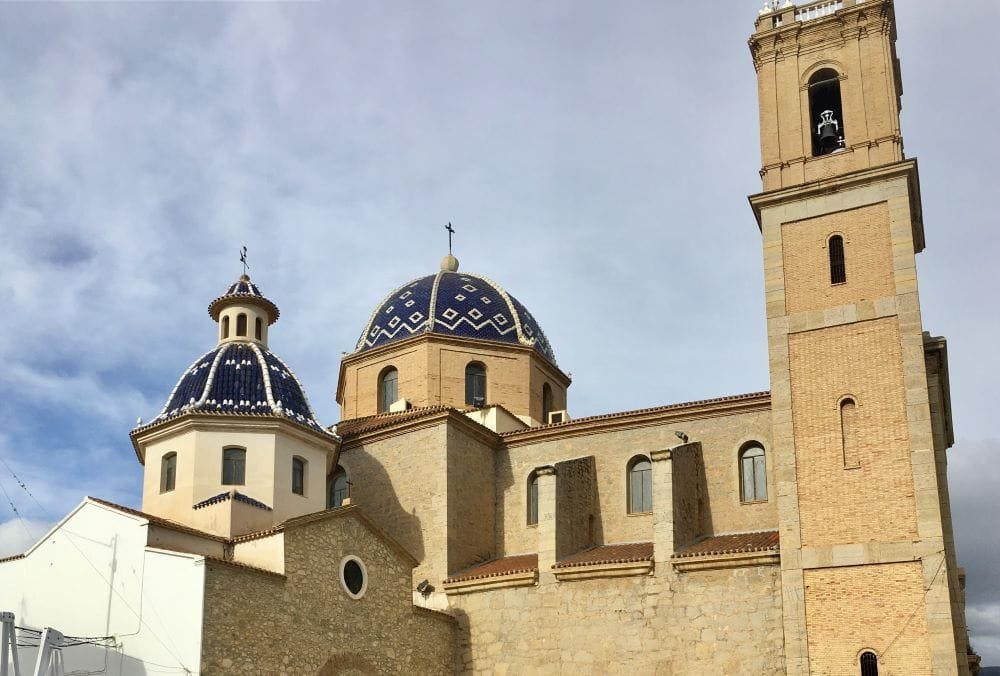
The Labyrinth of Whitewashed Streets
Altea Old Town isn’t meant to be rushed. Its streets seem designed for wandering, not for getting from one place to another. Each alleyway twists and turns, revealing unexpected beauty—a hand-painted tile embedded in a doorway, a Moorish-inspired wrought-iron balcony, or a hidden courtyard where ivy and bougainvillea climb in tangled harmony.
The layout is no accident. During the Moorish period, these streets served a defensive purpose, designed to confuse invaders and provide shade from the sun. Today, they simply invite exploration, turning every stroll into a treasure hunt for hidden details and quiet moments.
The Artists’ Quarter (El Fornet)
Tucked within the old town, El Fornet remains Altea’s creative soul. Once a haven for painters, poets, and sculptors, it continues to house independent galleries, artisan workshops, and working studios. Walking through its streets, you might stumble upon a ceramicist shaping clay, a painter capturing the sea’s shifting light, or a gallery showcasing contemporary Spanish art.
One highlight is Galería Alcolea, known for its exhibitions of modern Spanish artists. Unlike the large commercial galleries of bigger cities, spaces like these keep Altea’s artistic heritage alive, maintaining its legacy as a place of inspiration and creation.
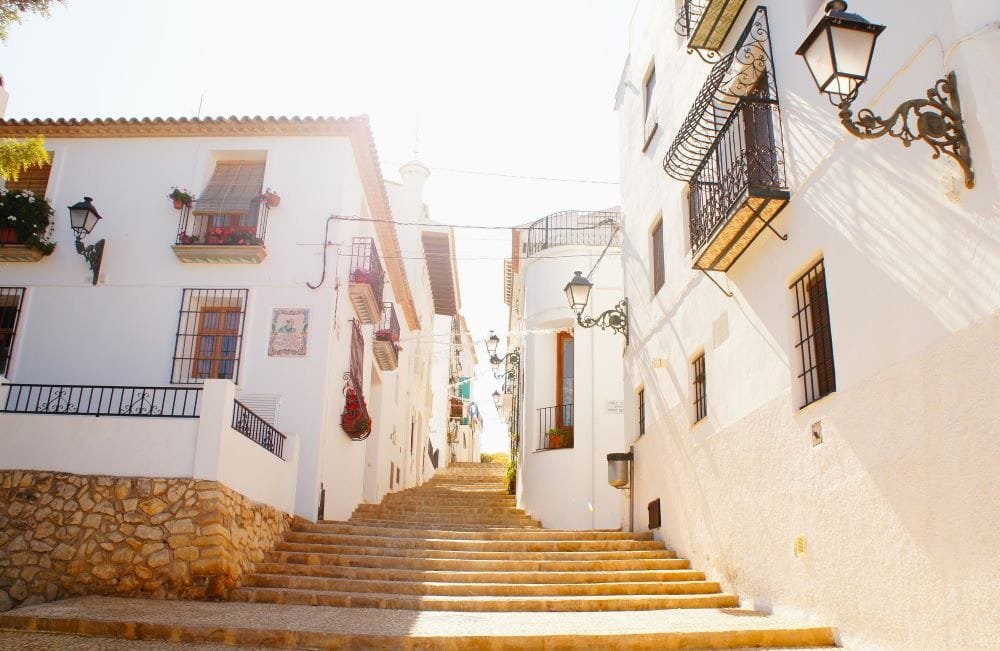
The Waterfront Promenade & Fisherman’s Quarter
Descending from the heights of Altea Old Town, the landscape shifts. Whitewashed walls give way to the deep blues of the Mediterranean, and the scent of salt fills the air. At the base of the hill lies Raval de la Mar, Altea’s historic fisherman’s quarter.
For centuries, this was the town’s lifeline to the sea. The harbor bustled with wooden fishing boats, their nets cast into waters rich with bream, sardines, and red prawns. Today, the boats remain, gently swaying with the tide, but the district has evolved. Seaside taverns now line the promenade, serving freshly grilled seafood, arroz a banda, and local wines. As the sun sinks into the horizon, the sky turns to gold, then deep indigo, making the waterfront the perfect place for an evening stroll.
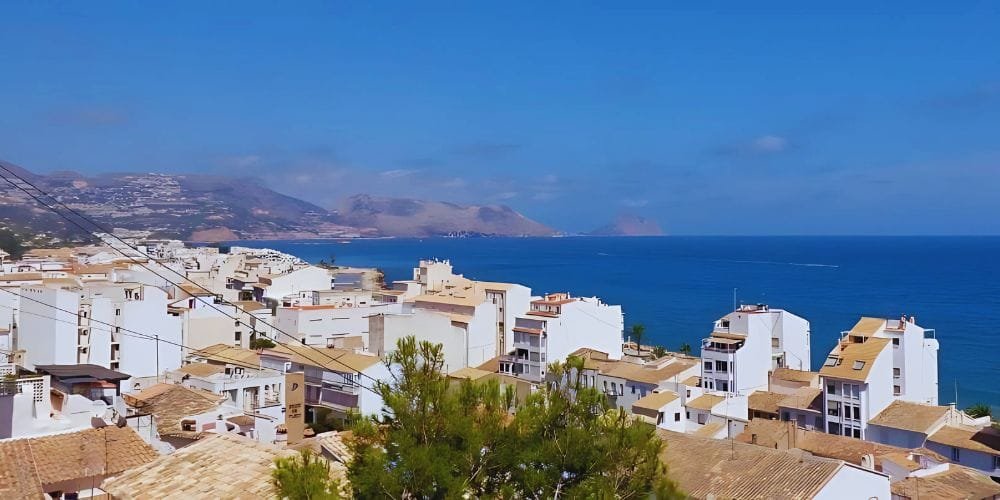
Altea la Vella – An Iberian Legacy
Just beyond the modern town, Altea la Vella holds echoes of a much older civilization. This Iberian settlement, dating back to the 6th–5th century BCE, once overlooked the valley, a strategic location for trade and defense. Archaeologists have uncovered a necropolis, where warriors were buried with bronze ornaments, spearheads, and funerary stelae depicting their weapons. Among them, a stone-carved stele of a warrior, armed with a falcata (curved Iberian sword) and an antenna-hilted blade (now in the Alicante Archaeological Museum) stands as a reminder of the town’s early aristocratic class.
Visiting this site provides a rare glimpse into Iberian traditions, connecting modern-day Altea to its ancient past. It’s a place where history is written in stone, and where the origins of Altea Old Town truly begin.
Els Arcs – A Roman Echo in the Landscape
Beyond the Iberian era, the Romans left their mark on Altea. On the town’s outskirts, the remains of Els Arcs, a Roman aqueduct, still stand, whispering of a time when Altea was part of a vast Mediterranean trade network. Though only fragments remain, this engineering marvel once carried water to Roman settlements, linking the region to the larger infrastructure of Hispania.
While many visitors pass by without notice, those who stop will see more than just weathered stones. They will find a connection between past and present, proof that Altea’s history is not confined to books but is woven into the very landscape itself.

Activities You Can Do in Altea Old Town
Exploring Altea Old Town isn’t just about seeing—it’s about experiencing. Every corner of this historic enclave offers a glimpse into its artistic, cultural, and culinary soul. Whether you’re drawn to hands-on creativity, panoramic views, or the thrill of a traditional festival, Altea invites you to participate, not just observe.
Create Your Own Art in a Local Workshop
Altea Old Town breathes art. Since the 1960s, it has been a sanctuary for painters, sculptors, and ceramicists, all drawn to its soft Mediterranean light and bohemian spirit. Many studios and galleries open their doors to visitors, offering painting, pottery, and jewelry-making workshops. Here, you can try traditional Valencian ceramics, capture Altea’s skyline in watercolor, or shape your own clay creation—a piece of Altea to take home.
Watch the Sunset from Mirador Cronistas de España
No visit to Altea Old Town is complete without witnessing the sunset from its highest viewpoint. From Mirador Cronistas de España, the town unfolds beneath you—a cascade of white facades spilling toward the sea. In the distance, the coastline stretches from Sierra Helada to the Peñón de Ifach, fading into the evening haze. As the sky shifts from gold to violet, it’s easy to understand why so many writers, musicians, and dreamers have found inspiration here.
Savor the Flavors of Altea
Altea’s cuisine is a celebration of the sea. The region is well-known for its rice-based dishes, and no meal is more local than arroz a banda—rice simmered in a deep, saffron-infused fish broth. It’s best enjoyed at a harbor-side restaurant, where the catch of the day determines the flavor. For a sweet treat, sip on horchata, a Moorish-era drink made from tiger nuts, or sample local nougat, a staple of Valencian confectionery.

Discover the Secluded Beaches of La Olla and Cap Negret
Beyond the labyrinthine streets of the old town, Altea’s coastline hides some of the Costa Blanca’s most tranquil beaches. La Olla Beach, with its pebbled shore and crystal-clear waters, is ideal for a quiet swim away from the crowds. Further north, Cap Negret stands out with its black volcanic stones, a striking contrast against the turquoise Mediterranean. These beaches may lack the golden sands of resort towns, but they more than compensate with serenity, authenticity, and unspoiled beauty.
Step into History at the Moros y Cristianos Festival
If you visit in September, you’ll witness one of Spain’s most spectacular historical reenactments—the Moros y Cristianos festival. For several days, Altea Old Town transforms into a medieval battlefield, reliving the centuries-old clashes between Muslim and Christian forces. Expect elaborate parades, resounding drumbeats, theatrical performances, and a dazzling fireworks display over the sea. It’s more than a festival—it’s living history, woven into the fabric of the town itself.
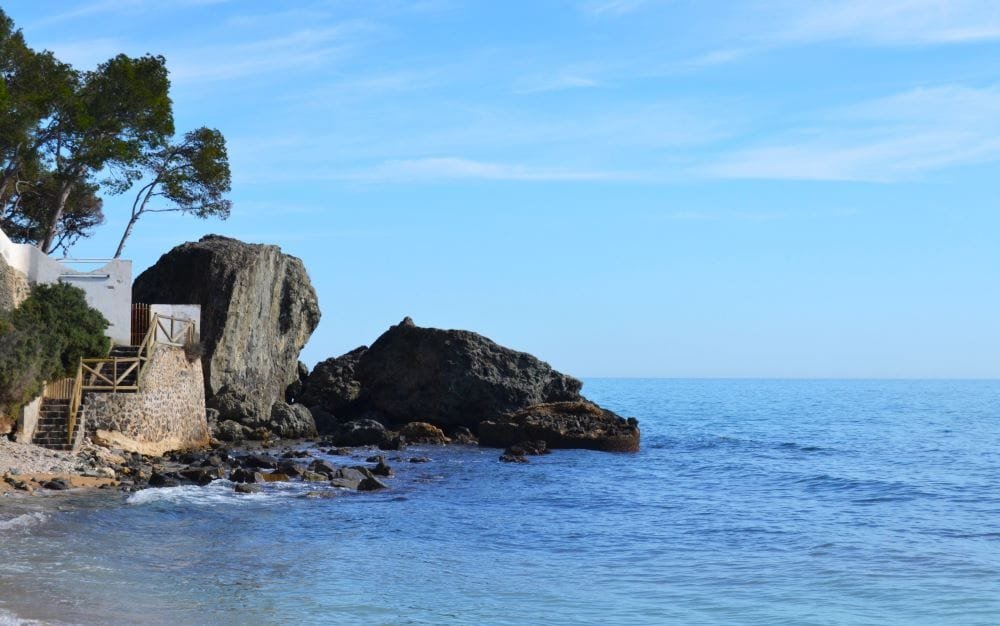
When to Go & How Long to Stay in Altea Old Town
No matter the season, Altea Old Town holds a quiet allure. Its whitewashed streets, terracotta rooftops, and endless sea views transform with the light and the time of year. But when is the best time to visit? That depends on how you like to travel.
The Best Time to Visit Altea Old Town
- Spring (April–June) & Early Fall (September–October)
These months offer the best balance of warm weather, cultural vibrancy, and tranquility. With temperatures ranging from 18 to 25 °C (64–77 °F), the days are comfortably warm, and the evenings bring a refreshing Mediterranean breeze.
This is the perfect time to stroll along cobbled streets, enjoy outdoor cafés, and browse artisan workshops with their doors wide open. The orange blossoms perfume the air, and without the summer rush, Altea feels effortlessly peaceful.
Altea’s longest days bring its liveliest energy. The streets buzz with visitors, festivals, and evening concerts, making it ideal for those who love a social, festive atmosphere. However, with temperatures often exceeding 30 °C (86 °F), the midday heat can be intense. If visiting in summer, take advantage of the evening magic—when lantern-lit alleyways, live music, and cool sea breezes transform the town into something unforgettable.
- Winter (December–February)
A different Altea emerges in winter. Gone are the crowds, replaced by a slower, quieter rhythm. The crisp air, often lingering around 10 °C (50 °F), makes it ideal for long walks, photography, and reflective moments. If you seek a peaceful retreat, winter in Altea Old Town offers serene beauty without distractions.
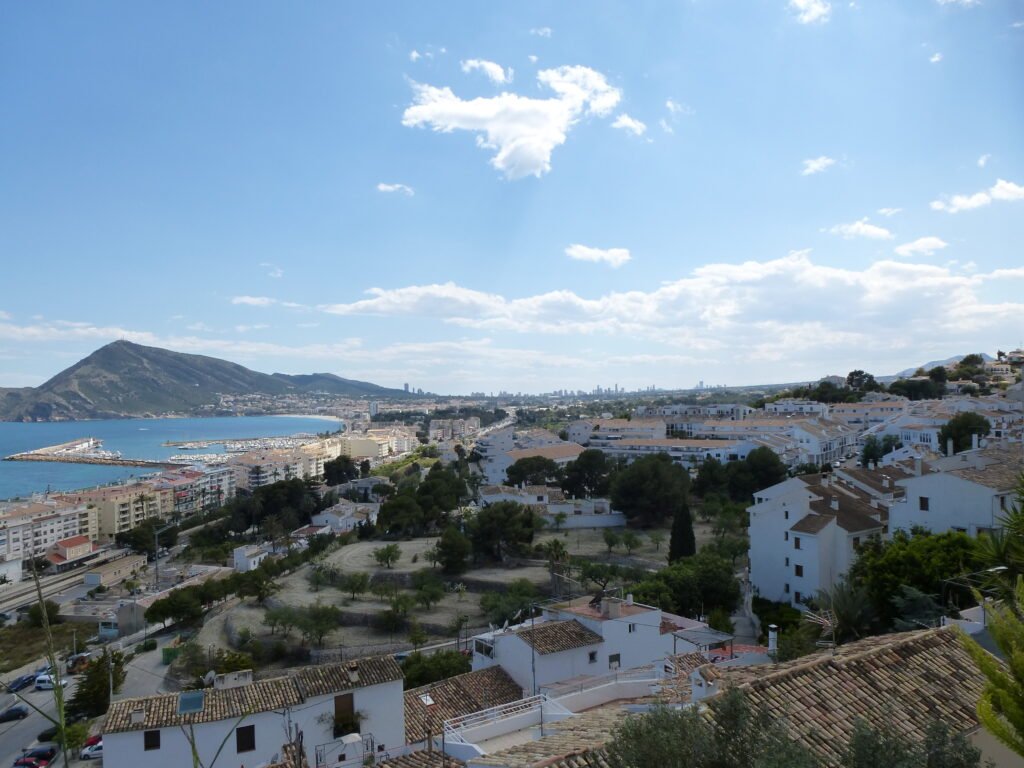
How Long Should You Stay in Altea Old Town?
Altea Old Town isn’t a place to rush. A day trip barely scratches the surface. To truly absorb its charm, stay at least two to three days. This allows time to wander its maze-like streets, sit for hours in sunlit plazas, and explore its artistic and historical treasures at a natural pace. In Altea, time moves differently—embrace it.

Final Thoughts: Will You Fall for Altea Too?
Some towns try to impress you. Altea Old Town doesn’t need to. It simply exists in all its whitewashed, sun-drenched glory, waiting for you to slow down and notice. Maybe you were drawn to the blue-domed church, the promise of hidden courtyards, or the idea of getting deliciously lost in its labyrinth of cobbled streets. But Altea is more than a postcard-perfect scene. It’s a town shaped by centuries of history, from Iberian settlers and Roman traders to Moorish architects and modern artists, all leaving behind something to be discovered.
By now, you can probably picture yourself wandering through Plaza de la Iglesia, peeking into artisan workshops, or tracing the town’s past in Altea la Vella archaeological site. Maybe you can even taste the arroz a banda by the waterfront or feel the sea breeze as you stand at the mirador, watching the sky turn to gold. Altea Old Town isn’t a place you visit in a hurry. It’s a place that rewards curiosity—where the smallest details, from an ancient doorway to the scent of orange blossoms, linger long after you’ve left.
So, will you let Altea work its quiet magic on you, as it has for centuries? Whether you come for the art, the history, or simply the feeling of stepping into another time, one thing is certain: Altea Old Town doesn’t just invite you to explore—it invites you to stay, if only in your memories.

